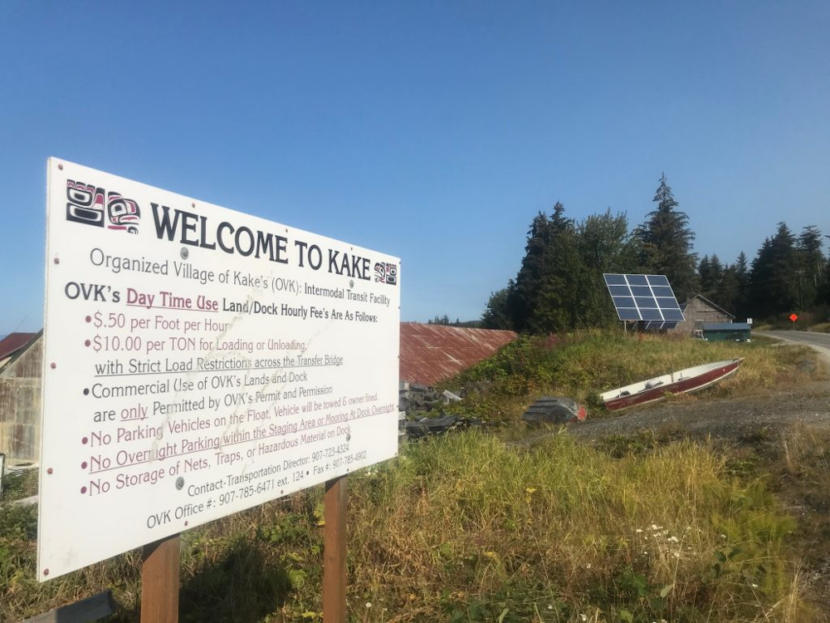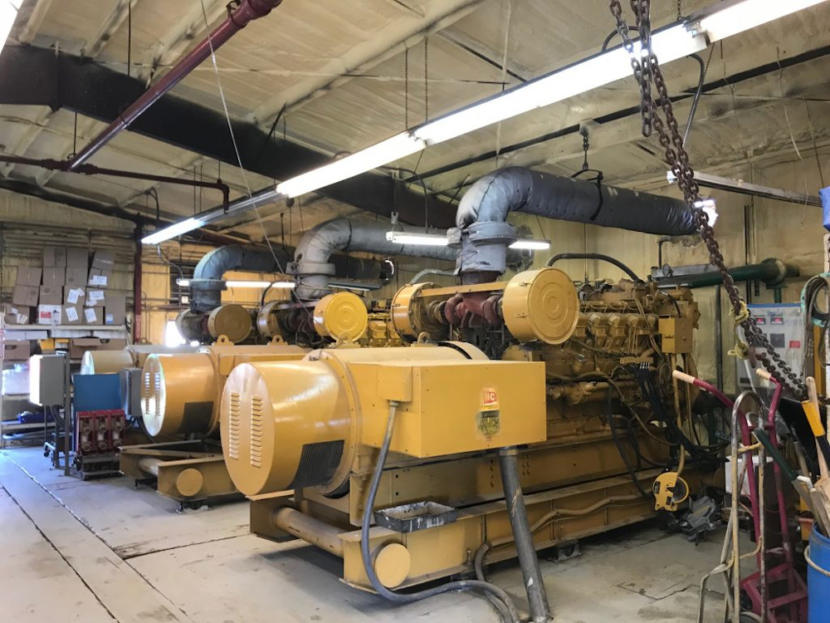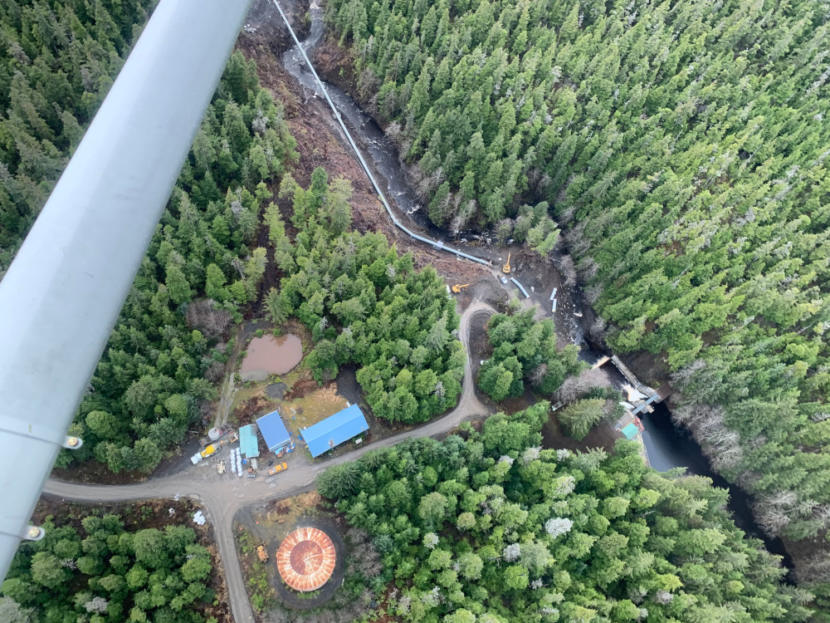
The rainforest of Southeast Alaska might seem like an unlikely place to find solar energy taking off. But that’s exactly what’s happening in Kake, where high energy costs have spurred growing interest in renewable energy.
While installing solar panels has allowed some people and organizations to cut their energy bills, the impact on the local grid is more complicated.
Like many isolated towns, Kake gets power from diesel generators — and it’s not cheap.
Dawn Jackson, executive director of the Organized Village of Kake, said high energy costs affect all aspects of the community’s day-to-day life.
“We’re so used to having one light bulb on,” Jackson said. “We’re so used to having a wood stove. We’re so used to having colder houses because the stoves are on low. And that’s how we raise our children, and that’s how our children are raising our grandchildren.”
But even this deeply-ingrained emphasis on energy efficiency isn’t always enough to keep the bills down.
“And the more that we try to conserve, the higher the electrical rates will be going up,” Jackson said. “This past year we had two or three electrical rate hikes.”
After you factor in state credits through the Power Cost Equalization program, the residential rate comes in around 30 cents per kilowatt-hour. That’s well above the statewide average of 23.4 cents per kWh, and close to three times the national average of 12.8 cents per kWh.
Gary Williams, a former OVK executive director, said high energy costs are a burden on businesses as well. The commercial electric rate is about 61 cents per kWh.
“Energy has been a critical issue over here, as far as a roadblock to development,” he said. “I mean it’s one of the things that probably was a main factor in why the cold storage ceased operations.”
In 2012, OVK received federal funding to install solar panels to defray its energy costs. Williams estimates the panels have saved thousands of dollars over the years.

Southeast Alaska isn’t exactly known as a sunshine destination, but if you’re going to put up solar panels in the rainforest, Kake is one of the best places to do so.
“They have really good exposure to the sun, particularly spring through fall. They have just this huge arc of sunlight across the horizon,” said Clay Good of the Renewable Energy Alaska Project. “More so than a lot of Southeast communities.”
Good works with towns around the region on a variety of renewable energy and energy efficiency projects. He said Kake’s favorable location has generated more local interest in solar.
“There seems to be more of a buzz about solar energy in Kake than you’ll find maybe in other communities that don’t have as good weather or as good exposure as Kake does,” he said.
Perhaps this should come as no surprise: The name Kake comes from the Tlingit words meaning “mouth of dawn” or “opening of daylight.”
The challenge, though, is linking solar energy to the grid. Kake buys its energy from the Inside Passage Electric Cooperative, or IPEC, which supplies electricity to five small Southeast communities.
IPEC CEO Jodi Mitchell said the company, like many residents, wants to cut rates and boost renewable energy production. But reaching that shared objective is more complicated: The recent uptick in solar energy has actually made electricity more expensive, because it means IPEC is selling less electricity overall.
“And if we’re selling less and less power, guess what happens to our rates? They have to go up to cover our costs,” Mitchell said. “We basically run IPEC as like a break-even entity, but you know no company can lose money for years and years and then be sustainable.”

The patchwork of solar installations also throws a proverbial wrench into the diesel generators. Mitchell uses the analogy of a stick shift car: The generators work most efficiently when they’re cruising along in fourth gear, but when the sun comes out and solar cranks up, IPEC has to downshift.
“Instead of having it in fourth gear, say we have to run it in third or second,” she said. “And so it’s not as efficient. And therefore we burn more fuel, it makes our whole system less efficient and also can cause long-term problems with our diesels.”
Mitchell is quick to add that IPEC is very much in favor of investing in low-carbon energy and reducing electric rates for its customers. But they prefer grid-wide projects over individually-owned systems. And they’ve got a big one in the works: the Gunnuk Creek hydroelectric project, which Mitchell says will supply at least half of Kake’s electrical demand.
“In fact, there will be times in Kake (when) we’ll be able to be diesels-off, when loads are low and there’s high rain events,” she said.
That project is expected to come online in the spring. But one hydro project is not likely to fully outshine emerging solar power in Kake. OVK plans to conduct a pair of studies this year to assess the viability of both residential and large-scale projects, opening Kake to even more daylight in the future.
